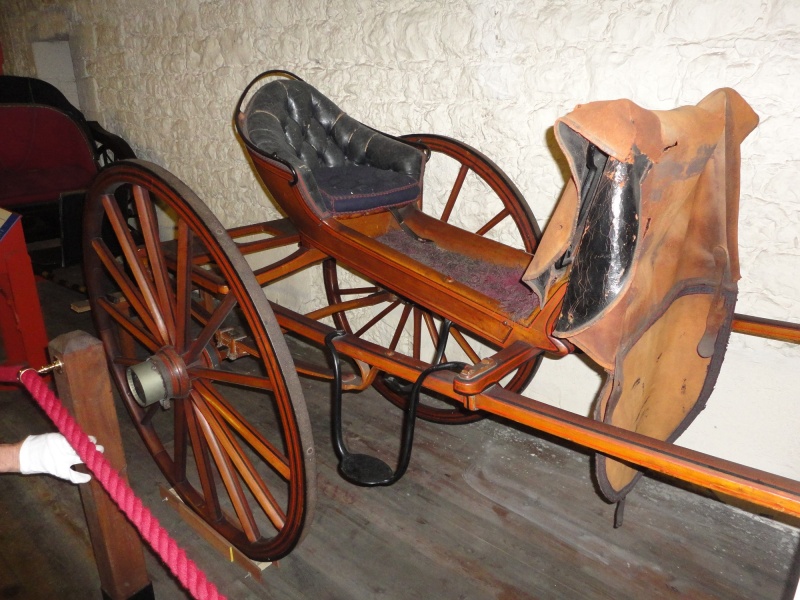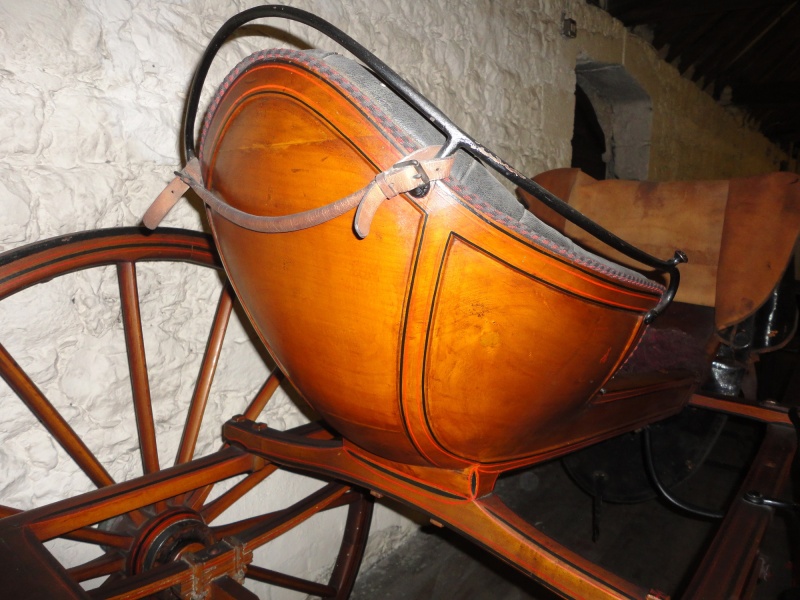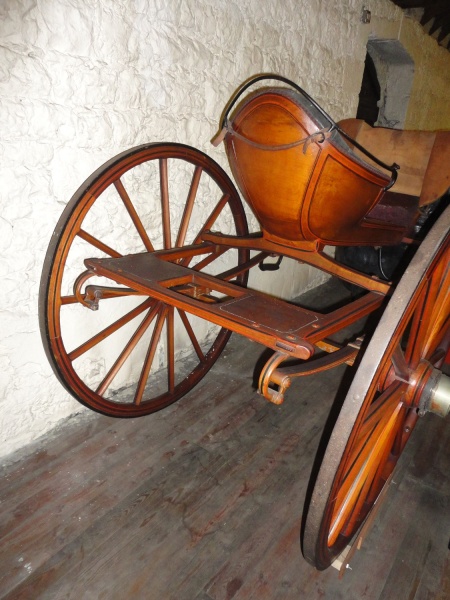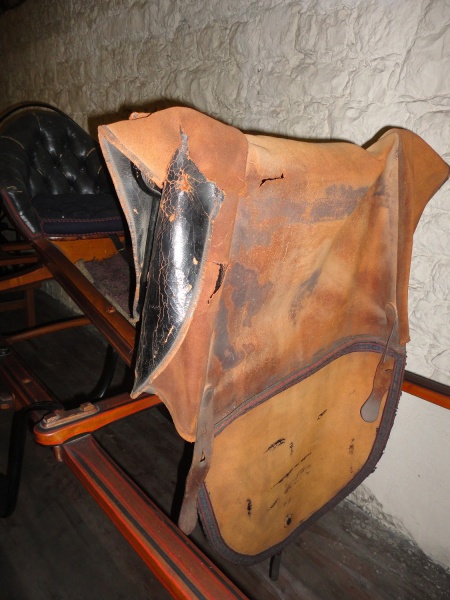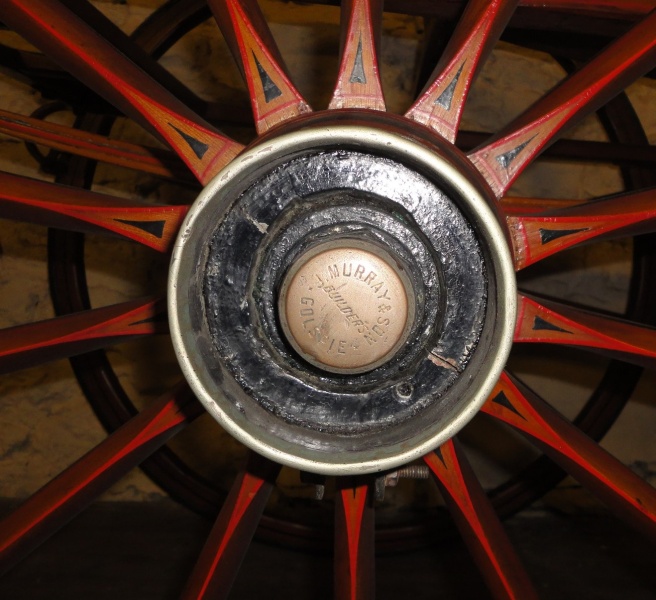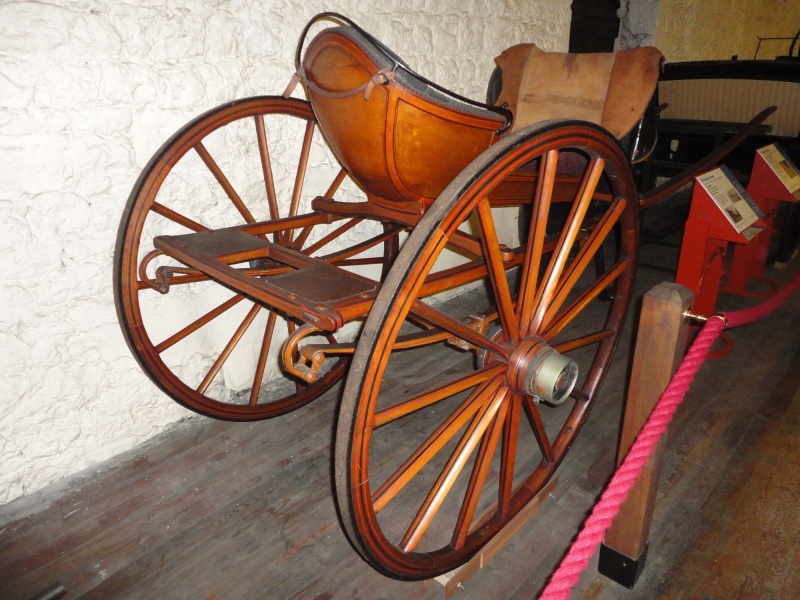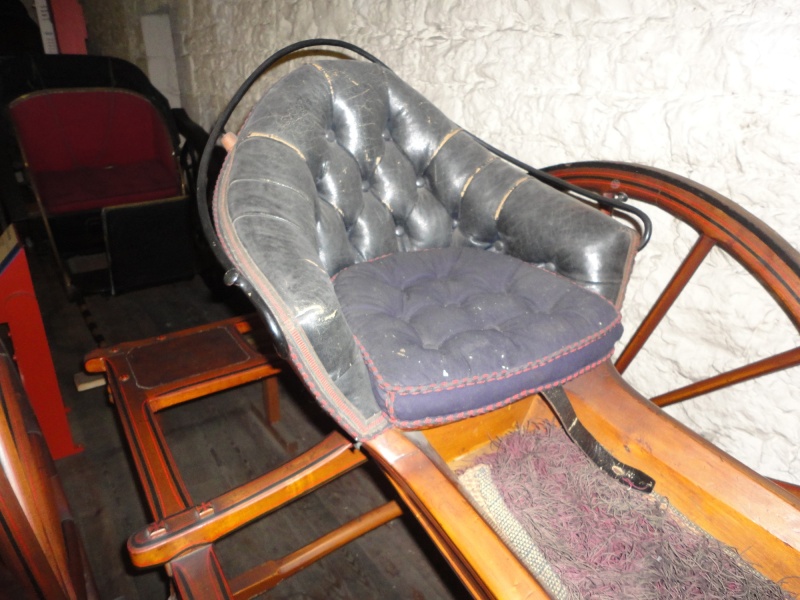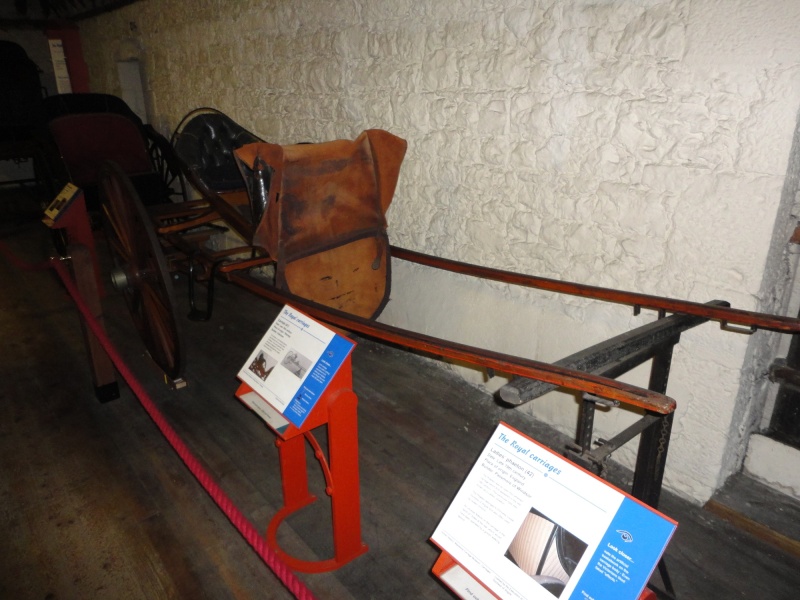Use the dots above to scroll through images.
Listed in 1 collection
Listed at 1 museum
Listed for 1 maker
Quick Details
Carriage Type
Carriole
Date of Production
1875
Materials used
Paint, Wood, Iron, Wool Box ClothSummary of Carriole
This Carriole is beautifully built by a Scottish coachbuilders as a presentation gift to H M Queen Alexandra (when Princess of Wales) by the Duke of Sutherland in 1875. It forms part of the Royal Collection and is on loan to the Tyrwhitt-Drake Carriage Museum.
The Carriole originates from the rural areas of Norway. They were generally un-sprung carriages and designed to carry one who would sit in the carriage with their legs almost out straight in front of them. These lightweight carriages were drawn by a single pony.
Full description
A carriage of superb quality in its build. Being of varnished this carriage has nowhere to hide and demonstrates the skill of the coachbuilders and the beauty of the materials used in its construction.
The Carriole originates from the rural areas of Norway and was a fairly basically constructed carriage without any springs. This example was built by the Scottish coachbuilders Murray and Son, and whilst it draws inspiration from the Norweigen Carriole in its appearance it is of a more high specification build and offers a more comfortable ride having side springs.
The body is a beautiful shape with a curved chair back and flat underside. The driver would sit in this carriage with their legs out almost straight in front of them hence the cradlelike appearance. A tall dashboard is at the front of the body of the carriage. Over this the original leather apron is draped. Pulled up over the occupant’s legs and attached to the knobs on the iron single seat rail and combined with the wool rug on the floor of the carriage, this made a cosy way to travel on cooler days.
The chair back envelops the occupant and is upholstered in black buttoned leather. A seat cushion is covered with blue box cloth edged with a seaming lace in blue and red. The same seaming lace finishes the edge of the chair back. On the floor is a wool fleece rug.
The body is supported on a cross bar at the front and back, bolted onto the shafts. The rear cross bar is slightly compassed up raising the body slightly. Two curved iron supports provide a little more stability and are bolted to the underside of the front on the body of the carriage and the underside of the shafts. Behind the rear cross bar is a small platform with a central square recess. A leather strap attached the seat rail at the back suggests that a groom or ‘Tiger’ may have ridden there.
One each side is a step with a profile that compliments the elegant lines of this carriage. The bracket is bolted on to the upper side of the shaft then curves downwards into a circular tread with jagged edges. The bracket then curves upwards and forward where it is bolted to the front cross bar.The shafts are almost straight in form with iron furniture that is painted black. Being a carriage that was only driven daylight ours there are no lamps or provisions to hold them.
The wheels are warner pattern with 14 spokes and iron tyres on collinge axles, brass hubs and axles caps. The axle is slightly compassed up.
This carriage has a lovely warm honey colour. Being varnished the best materials were used, wood of a good grain. All of the components are lined in black and red.
Inscriptions
Onthe axle caps: J.MURRAY & SON, BUILDERS, GOLSPIE
Condition report
This carriage is in very good original condition. The tyres are hardly worn which suggests minimal use. No components have been replaced. The leather apron is original but has become a little dry and cracked. All of the upholstery is in good condition but would benefit from a conservation clean. Paintwork and varnish all sound.
Access information
This Carriole is in the care of the Tyrwhitt-Drake Carriage Museum
Maidstone Museum and Art Gallery
St Faith's Street,
Maidstone
ME14 1LH
Picture credit
Maistone Museum and Benlif Art Gallery/Amy Bracey

 Carriage Foundation
Carriage Foundation